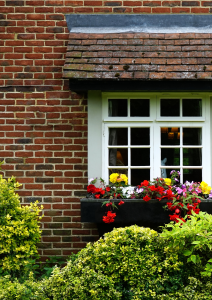The use of bricks for construction has a very long history. It dates back to ancient times, making bricks among the most durable materials for constructing walls, foundations, pillars, brick buildings and even some surfaces. In recent days, bricks have still maintained their versatile functions and are still used for building walls, home construction, etc.
Advantages of Bricks
The use of bricks for house construction has many advantages; they include. First, interior brick walls regulate room temperature; on a hot day, they bring about a cooling effect, whereas, on a cold day, they offer warmth hence a good indoor environment and a healthy house. Similarly, bricks have higher durability and therefore, the structure tends to last long. The use of bricks is environmentally friendly since bricks are a natural material.
Moreover, the brick’s nature makes it possible to absorb and balance humidity in the room. It is especially because their surface is more diffusion-open. Therefore, houses made of bricks are always dry and healthy, making it impossible for some pests to thrive. Bricks also offer sound insulation between rooms because they are a heavy material that absorbs noise.
How to Determine the Quality of a Brick
To be able to choose the highest quality bricks for your work, you must understand some of the factors to consider, they include; First, scrutinize the colour and shape of the brick. Well burnt bricks should have a uniform colour of rich red in most instances. Also, the brick’s size is important. Good bricks should be of uniform size without any defects on their edges. The hardness of a brick is another essential quality. To check this, scratch the brick using a sharp object. If the brick is good enough, there will not be any sign of the scratch.
Again, the brick composition of a good quality brick should be uniform. It should be free of chemicals and stones. To confirm this, you should break the brick and examine it for lumps. The water absorption ability of a brick is essential as well. A good brick absorbs not more than twenty percent of water. High water absorption drains water from the cement mortar hence tampering with the bonding process.
When the soils used for brick manufacture contains salts such as potassium, sodium and sulphates, they might dissolve during construction hence disrupting the brick surface. White patches on brick surfaces show the presence of these salts. A good brick should produce a metallic or ringing sound when struck against another, checking the sound quality also helps determine if the brick is good or not.
Types of Bricks
There exist many classifications of bricks based on different factors. Some of the classification factors include the brick’s quality, their manufacturing method, and the raw materials used.

Quality
The process of making and firing bricks is a complex one that if not done with care, the brick quality gets affected. First-class bricks supplied by the brickyard from good quality clay and are of regular size and shape. They are characterized by sharp edges and smooth surfaces and are the best for constructing structures meant to last hence best suited for the house.
There also are second-class bricks that have some irregularities in shape and size. Nevertheless, they are still used to partition walls and to build small structures. Third-class bricks have the poorest quality. They are characterized by irregular shape and size. They are either overburnt or under burnt, absorb too much water when immersed, and easily break hence unsuitable for house construction.
Manufacturing method
The extruded brick is made by pushing clay and water into a steel die of standard size and shape before it is cut out by wires and fired. There also are moulded bricks, and they can either be hand moulded or moulded by a machine. Nevertheless, there are dry pressed bricks which are made by the compression of clay into moulds. This method makes very high-quality bricks as compared to the other methods.
Raw materials
A brick is as good as the material it came from, many bricks are made from clay by firing. These types of bricks are the most common bricks used for construction work. There are also bricks made of fly ash which have a high volume of calcium oxide and are often referred to as self-cementing. On exposure to moisture, these bricks expand, they also are less porous and have a smooth surface hence no need for plastering.
There are concrete bricks that are of lower quality than the other types of bricks, they are characterized by their low compression strength and are rarely used. Mainly used for facades, building soundproof structures and as an internal brick because of their heat reduction and resistance properties. There also exist sand-lime bricks which are bricks made from lime. They are used for masonry works, ornamental architecture.







Add Comment